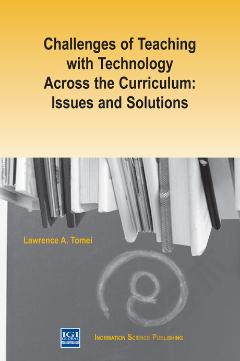Teaching with Technology: Perspectives, Challenges and Future Directions
This book aims to introduce the importance of integrating technology in teaching and learning; contemporary technologies used in schools for teaching and learning; methods of integrating technology into teaching and learning; functions of computer technology in acquiring skills and knowledge in schools; effects of technology in the 21st century education; improving the 21st century educational institutions via technology; issues relating to the use of technology in education, the relationship between learning theories and the use of technology in teaching and learning as well as the emerging trends and prospects in the use of technology in teaching and learning. The authors also present a study focused on exploring the process of teaching mathematics with mobile technologies in some classrooms in the lower secondary level (pupils 9-14 years old) in Slovakia. This scientific study was based on the realization of an inquiry-based learning in concrete topics from school mathematics. Later, physics is presented as the cornerstone for the formation of the scientific worldview for students of natural-science specialties. To improve the efficiency of teaching physics to various categories of students, the authors follow the physics as an empirical science. The authors maintain that mobile technology such as smartphones, tablets, and personal digital assistants (PDAs) allow nursing students to rapidly access current evidence-based resources at the “point of care” during the actual patient encounter, and thus should be introduced into the nursing curriculum. The closing study investigates success and barriers of interactive teaching in a Mathematics flipped classroom. Participants were 240 students at a study university of technology in South Africa. Students’ perspectives and their experiences of using interactive technology in a flipped mathematics course were also surveyed. (Nova)
{{comment.content}}








 京公网安备 11010802027623号
京公网安备 11010802027623号